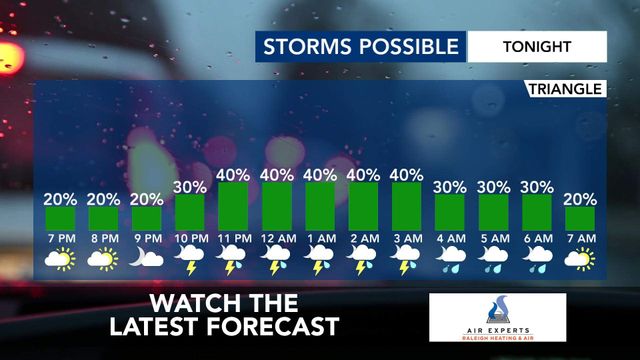@NCCapitol
Sizing up NC's proposed US House maps
Explore the findings from a new WRAL News analysis examining proposals for the state's new congressional districts
Posted 2019-11-14T15:02:18+00:00 - Updated 2019-11-14T15:35:59+00:00
Plenty of variation among 18 congressional map proposals
By Tyler Dukes , WRAL investigative reporter
After a court order in late October blocked the use of the state's congressional maps for the 2020 U.S. House elections, North Carolina lawmakers have worked over the past two weeks to draft new ones.
At issue here — just like in September when judges struck down the state's legislative maps — is whether U.S. House districts redrawn by Republican lawmakers in 2016 demonstrate extreme partisan gerrymandering, violating the North Carolina constitution.
Democratic and Republican members of the General Assembly have drawn more than 20 maps over the last few days. But are these proposals any less gerrymandered than their predecessors?
To find out, WRAL News re-sorted votes from the 2016 U.S. House and Senate elections to see how Republicans and Democrats would have performed under the map proposals.
We then compared the results to findings published by Duke University Mathematics Professor Jonathan Mattingly. His team used more than 60,000 computer-generated maps to show how the partisan makeup of the congressional delegation would change under different district lines.
Mattingly’s method helps demonstrate how the actual maps submitted by lawmakers perform compared to a massive number of other map combinations, accounting for common redistricting criteria like compactness and compliance with the federal Voting Rights Act. In a paper published in mid-October, Mattingly's analysis found that more than half of the computer-generated congressional maps would yield 5 Democrats under the conditions of the 2016 U.S. House elections. That provides at least one measure of how a nonpartisan map might change who the state sends to Congress.
Currently, three of North Carolina's 13 U.S. House members are Democrats.
Although not as comprehensive as a previous analysis of new maps for the state legislature, WRAL's new findings provide an early look at possible district lines as lawmakers look to adopt new versions in the coming days.
These results don't aim to predict outcomes in 2020. Instead, the goal is to see how the latest round of redrawn maps fare when measured against the larger universe of possible maps that state lawmakers could have created.
Explore our findings
See how the votes stack up for each map compared to the previous congressional district lines — as well as the tens of thousands of other possibilities generated by Mattingly's team. Each map uses labels from the General Assembly crediting the map's primary author.
Because the analysis yielded similar results using votes from both the 2016 U.S. House and U.S. Senate races, only the U.S. House results are shown below.
For more on how we performed our analysis, read our detailed methodology for our previous project on legislative maps.
Republican-authored maps
Map data released by the General Assembly's joint committee on redistricting shows six maps credited to Republican members. Two more released Wednesday night — labeled "LewisG-1-BK" and "LewisF-2-SA" below — will be the focus of discussion in the House and Senate this week. Using the results of this single election, all of the Republican-drawn proposals would have elected more Democrats than the previous congressional maps and are more in line with the bulk of the computer-generated maps.
LewisF-2-SA | 2020-A
LewisG-1-BK
NewtonA-5-4-TC
HiseA-4-1-TC
HiseA-5-BR
HiseC-1-ND
Using vote totals from the 2016 U.S House race, these six maps drawn by Republicans would elect five Democrats out of the 13 total U.S. House representatives for North Carolina, compared to 3 Democrats under the old maps.
LewisD-1-RN
LewisD-1-TC
Using vote totals from the 2016 U.S House race, these two maps drawn by Republicans would elect four Democrats out of the 13 total U.S. House representatives for North Carolina, compared to 3 Democrats under the old maps.
Democratic-authored maps
Democratic members of the joint committee on redistricting are credited with 12 new map proposals. Using the results of this single election, they would have elected more Democrats than the previous congressional maps and are more in line with the bulk of the computer-generated maps — in some cases electing more.
Clark-7-MT
Clark-8-6-TC
Clark-8-MT
Clark-9-6-RN
Farmer-ButterfieldA-1-2-TC
Farmer-ButterfieldA-1-SA
Farmer-ButterfieldC-1-BK
Using vote totals from the 2016 U.S House race, these seven maps drawn by Democrats would elect six Democrats out of the 13 total U.S. House representatives for North Carolina, compared to 3 Democrats under the old maps.
Farmer-ButterfieldA-1-3-BK
FloydA-1-ST
HarrisonA-1-TC
HarrisonA-2-BR
WillinghamA-1-1-ND
Using vote totals from the 2016 U.S House race, these five maps drawn by Democrats would elect five Democrats out of the 13 total U.S. House representatives for North Carolina, compared to 3 Democrats under the old maps.
Sources: N.C. State Board of Elections, N.C. General Assembly, Common Cause v. Lewis
Read the related methodology
Read the related methodology









